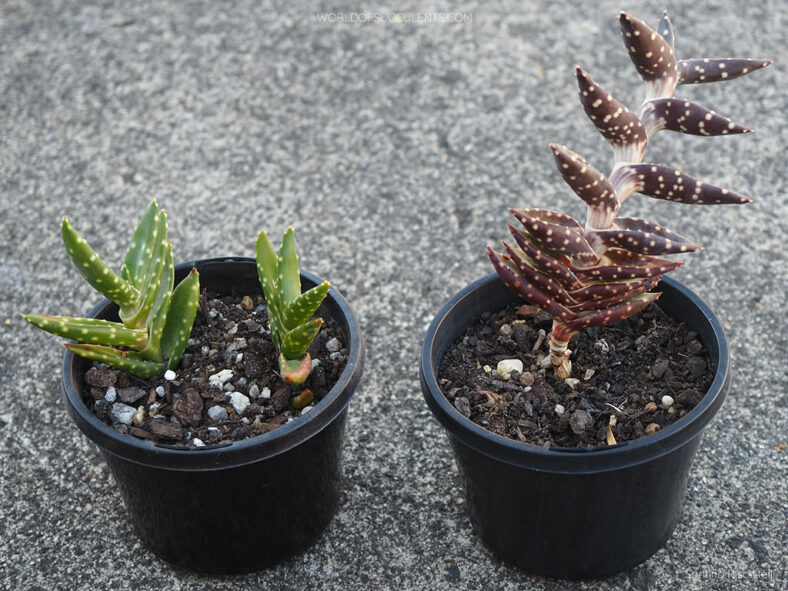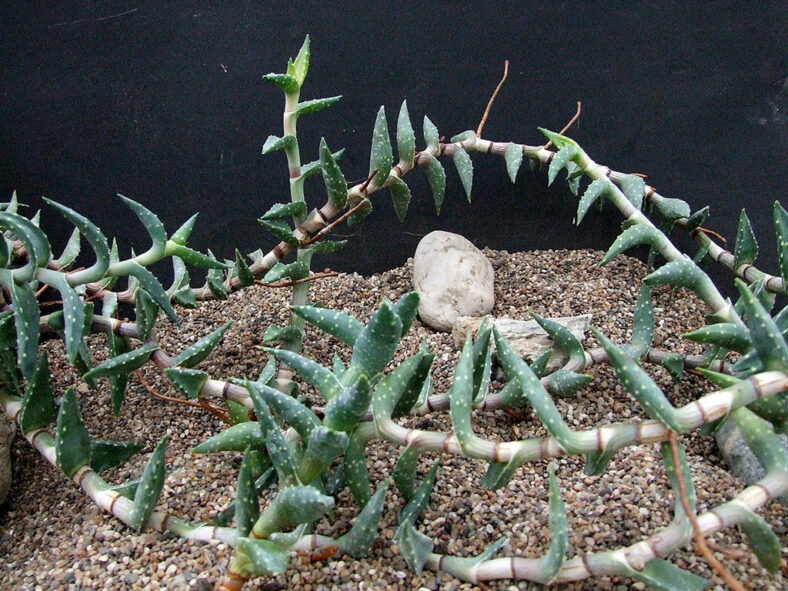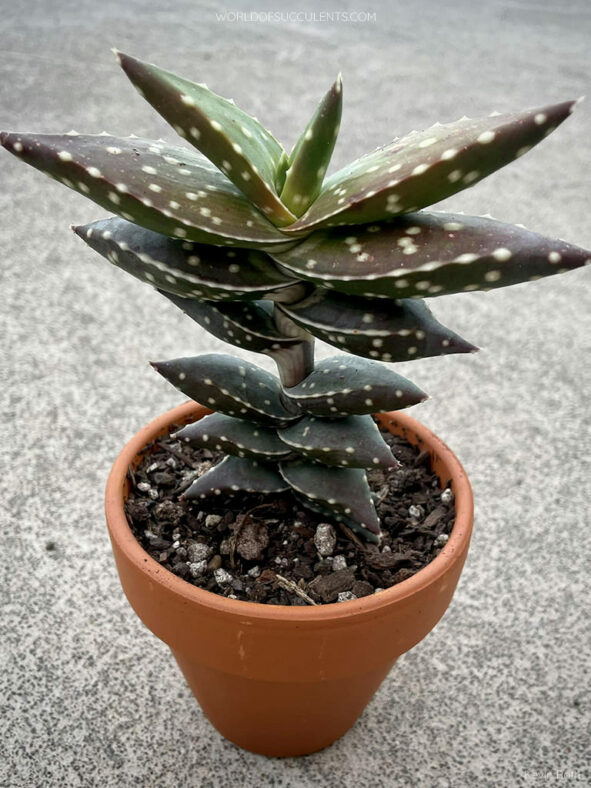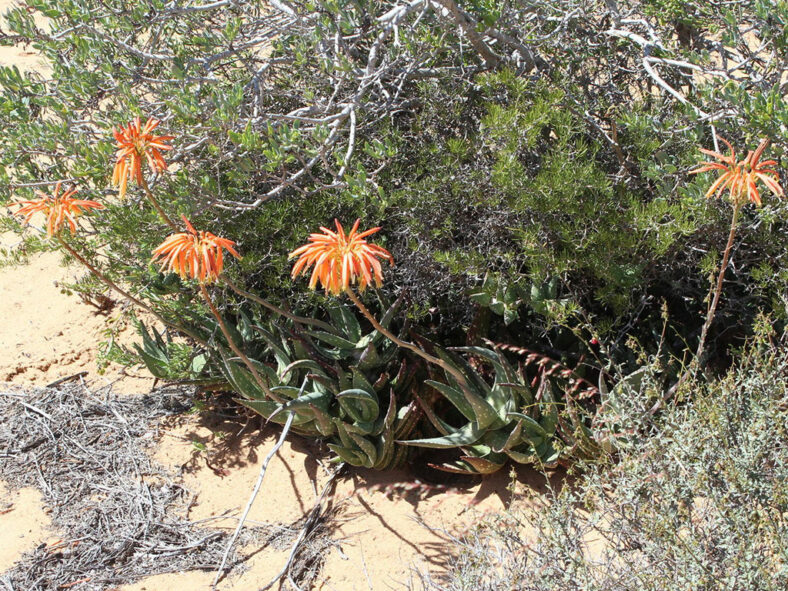Aloe arenicola is part of a group called Creeping Aloes. It naturally grows in almost pure sand under almost rainless conditions. During certain times of the year, its main source of moisture comes from condensation from mist and sea fog.
Scientific Name
Aloe arenicola Reynolds
Common Name(s)
Sand Aloe, Bont-Ot'korrie (Afrikaans)
Scientific Classification
Family: Asphodelaceae
Subfamily: Asphodeloideae
Genus: Aloe
Etymology
The specific epithet "arenicola" (pronounced "ar-en-EE-koh-luh") means "sand-dwelling" and refers to the native habitat of this species.
Origin
Aloe arenicola is native to Madagascar. It occurs in the Northern Cape and Western Cape provinces between Alexander Bay and Lambert's Bay.
Description
Aloe arenicola is a succulent shrublet with creeping stems that bear blue-green leaves adorned with irregularly scattered white spots on both surfaces. The stems can be either simple or branched, growing up to 3.3 feet (1 m) long and 0.15 inches (0.4 cm) in diameter. They may also have persistent dried leaves. The lance-shaped leaves have whitish margins with tiny teeth and can measure up to 8 inches (20 cm) long and 2.4 inches (6 cm) wide. Under stress, the leaves may take on a brownish-red hue.
From mid-winter to early summer, Aloe arenicola produces peach-red flowers that are paler toward the mouth. The flowers appear densely packed in inflorescences, which can be simple or may have one or occasionally two branches that emerge from the middle. The inflorescences can grow up to 20 inches (50 cm) tall, while the flower clusters can reach a length of about 2.4 inches (6 cm) and a diameter of 3.6 inches (9 cm).

How to Grow and Care for Aloe arenicola
Light: When growing Aloe arenicola indoors, place it in a window with plenty of bright indirect light. Rotate the pot once or twice a week to ensure all sides of the plant receive equal lighting. Outdoors, the plant prefers light shade, especially during the hottest parts of the day.
Soil: Great drainage is essential for growing this plant because too much moisture for an extended period can cause root rot. Use commercial soil for succulents, or make your own well-draining mix.
Temperature: When temperatures shift below 50 °F (10 °C), it is time to bring this plant inside. It tolerates heat fairly well but will not survive a hard frost. Aloe arenicola grows best in USDA Plant Hardiness Zones 9b to 11b, with average minimum winter temperatures ranging from 25 to 50 °F (-3.9 to 10 °C).
Watering: This plant needs regular watering but can tolerate drought conditions for short periods. Water deeply, but only when the soil is completely dry to the touch, and do not let water stand in the rosettes. Cut back on watering during the winter months.
Fertilizing: Although it generally does not require fertilizer, Aloe arenicola will benefit from extra nutrients. Use a water-soluble fertilizer diluted to half the recommended strength.
Repotting: Repot only as needed during spring. Pick a container that is one size larger and has drainage holes.
Propagation: To propagate Aloe arenicola, remove the offsets from a mature plant from late spring to early summer. It is also easy to start from seeds. For best results, sow the seeds during the warm months.
Learn more at How to Grow and Care for Aloe.
Toxicity of Aloe arenicola
Aloe arenicola is non-toxic to people but is mild to moderately toxic to pets.
Links
- Back to genus Aloe
- Succupedia: Browse succulents by Scientific Name, Common Name, Genus, Family, USDA Hardiness Zone, Origin, or cacti by Genus
Photo Gallery
Click on a photo to see a larger version.


